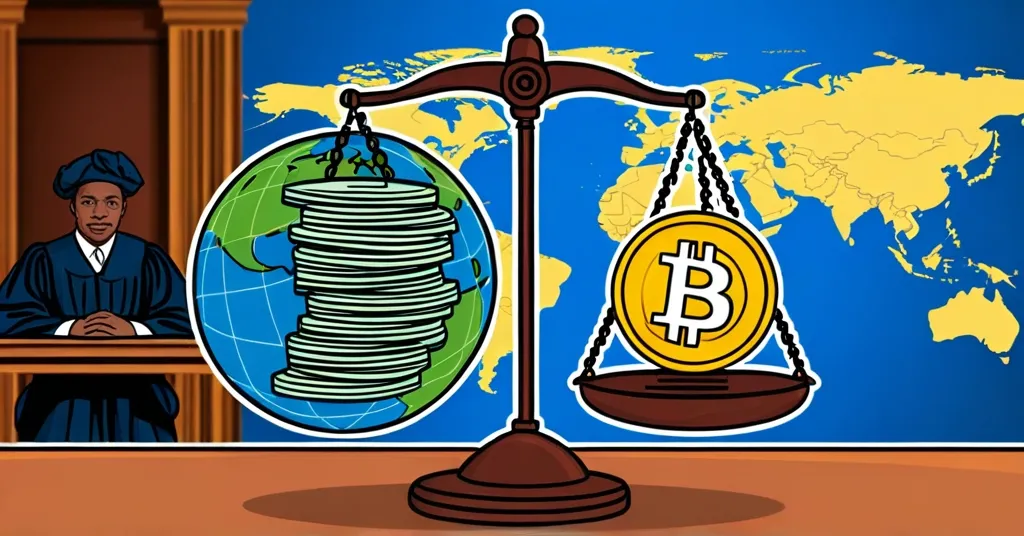Binance.US Resumes USD Transactions Amid $81.5B Nigeria Lawsuit and U.S. Legal Battles

Binance.US Restarts USD Transactions Amid Global Legal Battles
Binance.US has revitalized its USD transaction capabilities, a relief for users after a period of crypto-only operations due to regulatory scrutiny. However, the platform faces significant challenges, including a colossal $81.5 billion lawsuit from Nigeria and ongoing legal battles in the U.S.
- Binance.US resumes USD transactions
- Nigeria sues Binance for $81.5 billion
- Binance executive detained and released in Nigeria
- U.S. Supreme Court rejects Binance’s appeal
- Binance lacks a formal headquarters
- CZ’s social media activity impacts memecoins
On February 19, 2025, Binance.US announced the resumption of its USD services, allowing customers to deposit and withdraw USD via bank transfer (ACH, or Automated Clearing House) without fees. This move follows intense regulatory scrutiny from the U.S. Securities and Exchange Commission (SEC). Richard Teng, Binance’s CEO, expressed optimism, stating,
“We have a fresh reset and a fresh restart in America.”
Yet, this victory is just a small respite in a sea of regulatory challenges.
Meanwhile, Nigeria’s Federal Inland Revenue Service (FIRS) has filed a lawsuit against Binance for a staggering $81.5 billion, alleging economic damage and tax evasion. The Nigerian government claims that Binance’s operations have significantly impacted the naira currency. This legal action reflects a broader crackdown on cryptocurrency in Nigeria amid economic challenges.
The situation escalated when Tigran Gambaryan, a Binance executive, was detained in Nigeria for eight months starting in February 2024. His release came after intense negotiations with U.S. federal representatives. The ordeal led to a war of words between Gambaryan and Nigerian officials, with Mohammed Idris, the Nigerian Minister of Information, expressing frustration over the tactics used by Gambaryan’s team. Despite his release, tensions with Nigerian authorities remain high.
In the U.S., the legal battles continue. The Supreme Court rejected Binance’s appeal to dismiss a lawsuit brought by a group of people, allowing it to proceed. The lawsuit alleges that Binance sold unregistered securities, adding to the company’s legal woes. Moreover, Binance still operates without a formal headquarters, though the United Arab Emirates is considered for a potential location. It’s like a corporate game of musical chairs with high stakes.
Amid these challenges, Changpeng Zhao (CZ), Binance’s founder, continues to influence the crypto community through his social media activity on X (formerly Twitter). His posts inadvertently promote memecoins, despite his reservations about their volatility. A recent global user survey revealed that 16.1% of Binance users hold memecoins, highlighting the speculative nature of this market segment. As CZ himself noted,
“I am not against memes, but meme coins are getting ‘a little’ weird now.”
These developments underscore the broader regulatory tensions and market dynamics within the cryptocurrency industry. As regulators worldwide grapple with overseeing this disruptive technology, companies like Binance find themselves in the crosshairs. Additionally, the influence of public figures like CZ on market trends through social media adds an unpredictable element to the crypto space.
While Bitcoin maximalists might argue that these challenges highlight the need for a decentralized financial system free from regulatory overreach, it’s crucial to recognize that altcoins and other blockchain technologies play vital roles in the ecosystem. They offer niches and innovations that Bitcoin, with its focus on being a store of value and medium of exchange, may not address as effectively. The crypto revolution is about more than just one cryptocurrency; it’s about a diverse range of technologies working together to challenge the status quo.
However, let’s not forget the dark side of this industry. The speculative nature of memecoins and the regulatory battles faced by platforms like Binance are reminders that the crypto space is not without its risks and challenges. Scammers and unrealistic price predictions continue to plague the industry, and we must remain vigilant and critical of such practices.
Key Questions and Takeaways
- What led to Binance.US resuming USD transactions?
The resumption followed a period of regulatory scrutiny and a pause in SEC litigation, allowing Binance.US to reinstate USD services.
- Why is Nigeria suing Binance for $81.5 billion?
Nigeria alleges that Binance caused significant economic damage and failed to pay taxes, claiming the company’s operations impacted the naira currency.
- What was the outcome of Tigran Gambaryan’s detention in Nigeria?
Gambaryan was released after negotiations with U.S. federal representatives, though tensions continue with the Nigerian government.
- How has the U.S. Supreme Court decision affected Binance?
The rejection of Binance’s appeal allows a lawsuit brought by a group of people to proceed, concerning allegations of selling unregistered securities.
- Why does Binance still lack a formal headquarters?
Binance has historically avoided establishing a fixed location to sidestep jurisdictional issues, though considerations for a headquarters continue.
- What role does CZ play in the memecoin market?
Despite expressing reservations, CZ’s social media posts inadvertently influence the memecoin market, leading to volatility and speculation.
- What are the broader implications of these developments for the cryptocurrency industry?
They highlight ongoing regulatory challenges and the influence of public figures on market dynamics, emphasizing the need for clearer regulatory frameworks and responsible communication within the crypto space.



